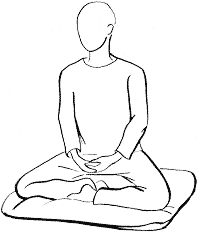 This picture frustrates me over and over again. It’ disrespectful, insensitive, and offensive.
This picture frustrates me over and over again. It’ disrespectful, insensitive, and offensive.
My friend tells me that I’m overreacting and taking it too seriously.
But would they say the same if a Christian person complained about their religion taken out of it’s context and being used for commercial purposes?
Why, for some reason, do some religions in America seem to carry more legitimacy, treated with more respect and sensitivity, over other religions in America?
Can you imagine a scenario in which Las Vegas opened a new nightclub called “Trinity” that themed all it’s decorations and advertising material around Jesus and other Christian icons? Would Christians (and Americans in general) find that disrespectful and offensive? Would their feelings be treated as melodramatic and inappropriate?
Religious nightlife indeed.
I find that this doesn’t only happen with Christians or Americans. I went on a tour bus trip from Los Angeles to Yellowstone National Park. On our way back to Los Angeles, we stopped in Utah to visit their famous Mormon church. We had several tour guides who gave us a brief tour of the church and basics about the Mormon faith.
One of the tour guides was a girl from Korea who is spending about a year and a half studying and volunteering at the Mormon Church. She was younger than the other “Sisters” who helped lead the tour. Halfway though the tour, it became obvious that many of the men on our tour were intentionally trying to talk to the Korean tour guide or get a photograph with her. I heard men around me talkinabout how pretty she was, encouraging their friends to also take a photo with her. In comparison, the other two tour guides who were just standing to the side, apparently not interesting or attractive enough for the tourists to interact with.
I found this to be greatly disturbing – the idea that people were flirting with one of the religious representatives of the Mormon faith. Those men didn’t seem to care or see anything wrong with what they were doing. But would those men treat representatives from their own religion (monks, pastors, nuns, etc) in the same way?
How come we cannot follow one of the simplest pieces of advice taught to us as toddlers – to treat others the way we’d like to be treated?






 This weekend I had the pleasure of listening to
This weekend I had the pleasure of listening to  I’m writing today’s post as a white male American Buddhist. I shouldn’t introduce myself as a privileged white Buddhist, though. Not because it’s unfair—but simply because it’s redundant.
I’m writing today’s post as a white male American Buddhist. I shouldn’t introduce myself as a privileged white Buddhist, though. Not because it’s unfair—but simply because it’s redundant. but it’s not because I woke up this morning itching to write another Angry Asian Buddhist post. Yesterday a student asked me about what it means to be Buddhist, so I decided to forward her a link to a post from a year ago, “
but it’s not because I woke up this morning itching to write another Angry Asian Buddhist post. Yesterday a student asked me about what it means to be Buddhist, so I decided to forward her a link to a post from a year ago, “

